Diabetic Retinopathy: Early Signs and Effective Management
Diabetes is one of the deadliest diseases known to mankind. It affects about 1 in 11 people worldwide. As for…
Oculoplasty, also known as ophthalmic plastic surgery, focuses on the eye and its surrounding structures. It addresses eyelid and lacrimal system issues, combining art and science. This surgical approach aims to enhance eye function, comfort, and appearance.
Oculoplasty treatment is sought for various conditions related to the eye and its surrounding structures. Some of the conditions that may require Oculoplasty include:
1. Ptosis: A drooping or sagging of the upper eyelid, which can obstruct vision.
2. Entropion: Inward turning of the eyelid, causing the eyelashes to rub against the eye's surface.
3. Ectropion: Outward turning of the eyelid, leading to excessive tearing and exposure of the eye's surface.
4. Eyelid Tumors: Abnormal growths on the eyelids that need surgical removal and reconstruction.
5. Blocked Tear Ducts: Obstruction in the tear drainage system, leading to excessive tearing and discomfort.
6. Orbital Fractures: Fractures around the eye socket, requiring repair to maintain eye function and appearance.
7. Thyroid Eye Disease: A condition associated with Graves' disease, causing eye protrusion and double vision.
8. Facial Palsy: Paralysis of the facial nerves affecting eyelid closure, necessitating reconstructive surgery.
9. Congenital Deformities: Birth defects affecting the eyelids or eye area, which can be corrected with Oculoplasty.
10. Eye Socket Reconstruction: Repairing and reconstructing the bony socket after trauma or surgery.
1. Blepharoplasty: This surgical procedure involves the removal of excess skin, fat, or muscle from the eyelids. It is commonly performed to correct droopy or baggy eyelids, rejuvenating the appearance and improving vision in certain cases.
2. Botox Treatment: Botulinum toxin (Botox) injections are used to temporarily relax the muscles around the eyes. It is often employed to reduce wrinkles, fine lines, and crow's feet, creating a more youthful appearance.
3. Dermal Fillers: Injecting dermal fillers helps add volume to areas around the eyes, reducing the appearance of hollows or wrinkles. They can be used to treat under-eye bags or sunken areas.
4. Orbital Decompression: This surgical procedure is performed to alleviate pressure and create more space within the eye socket. It is commonly used to treat conditions like thyroid eye disease, which causes bulging eyes and compression of the optic nerve.
Dr. Amit Khedekar is our Orbit and Oculoplasty consultant. Dr. Amit graduated from LTMMC SION and completed MS in Ophthalmology at KEM Hospital, Mumbai. After that he pursued a long term fellowship in the field of Oculoplasty at Aravind Eye Hospital, Madurai under Dr. Usha Kim. Dr. Amit has special interests in lacrimal drainage system, orbital reconstruction and lid reconstruction. He also has experience in handling ophthalmic oncology cases. Making the patient understand complicated medical terminology in a simplified way and boosting patients confidence about management are some of the key highlights of his methodology.
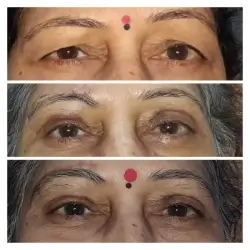
Bilateral Brow Ptosis
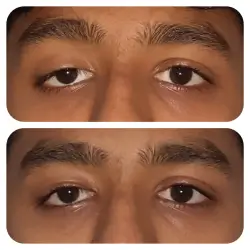
Ptosis-frontalis sling
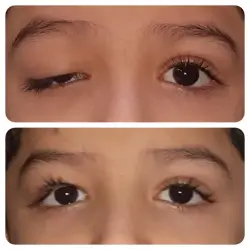
Ptosis-frontalis sling
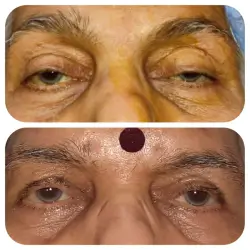
Ptosis
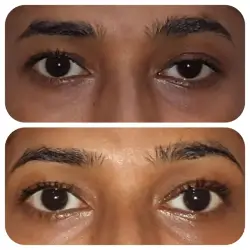
PTOSIS LPS RESECTION
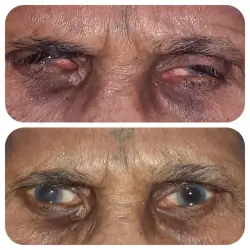
Bilateral Upper lid Entropion
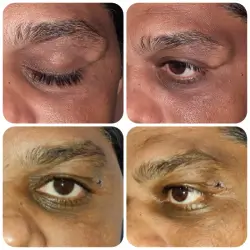
DERMOID
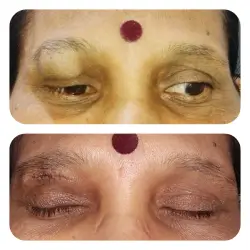
DERMOID
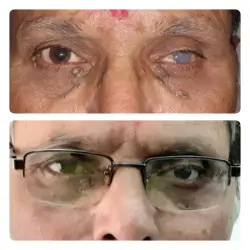
Evisceration with PMMA Implant
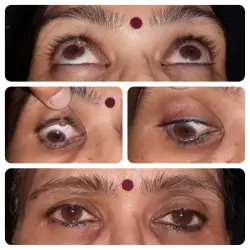
Lid mass excision
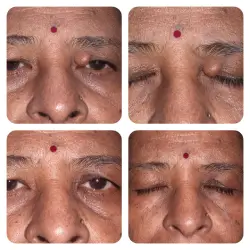
Lid mass excision
Diabetes is one of the deadliest diseases known to mankind. It affects about 1 in 11 people worldwide. As for…
Think about waking up on a random morning and finding a tiny red bump sitting on your eyelids. You touch…
Do you spend long hours staring at the screen or reading fine print? If so, you might have experienced tired…